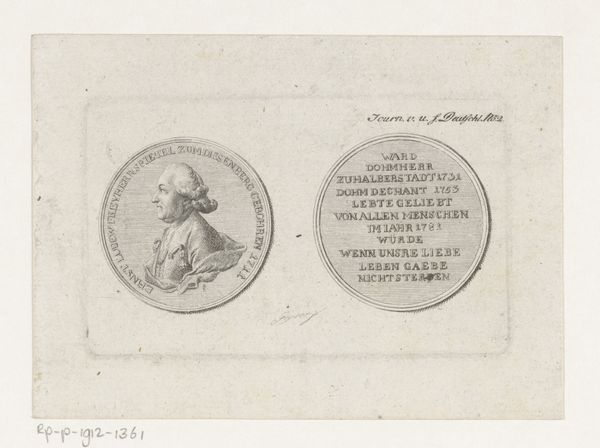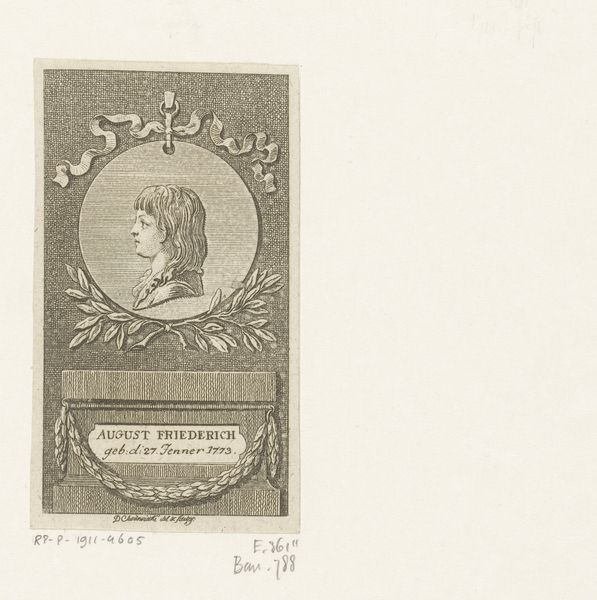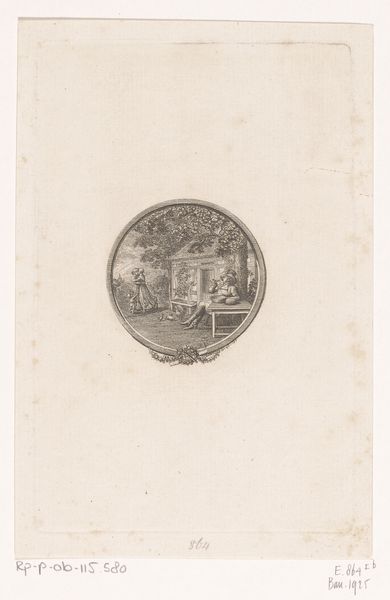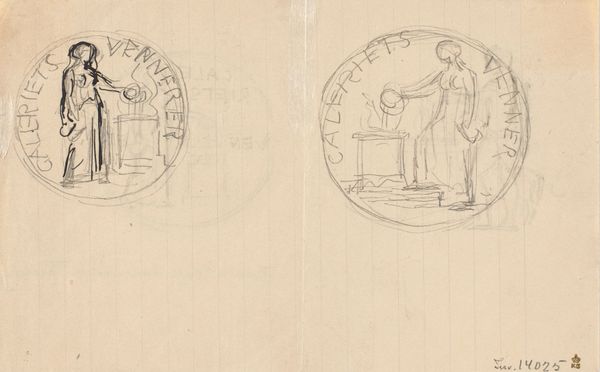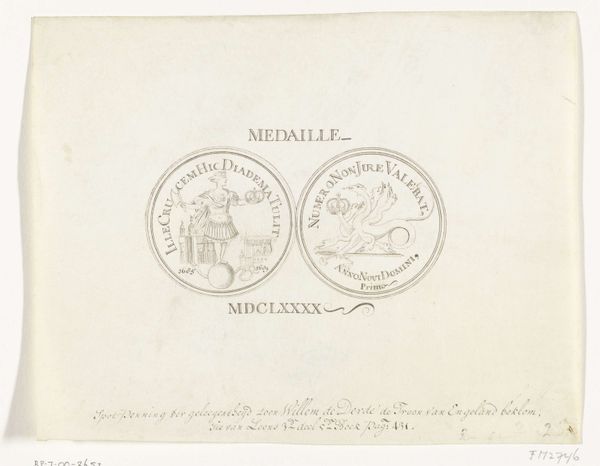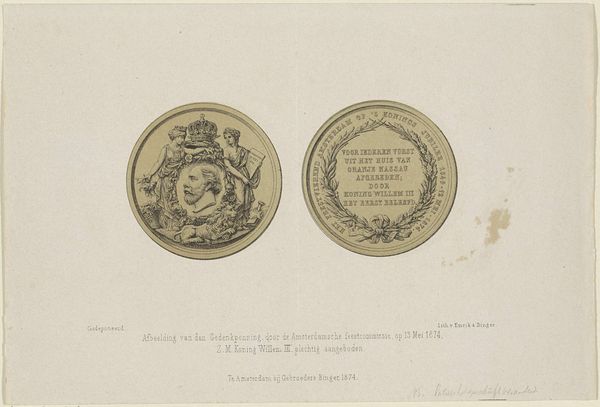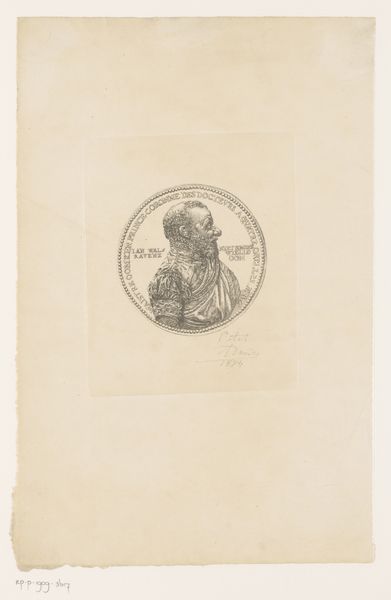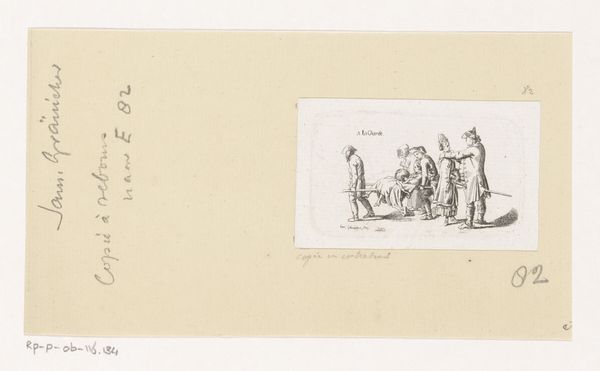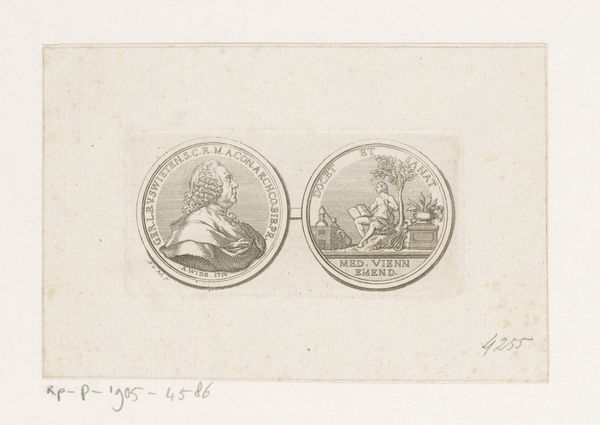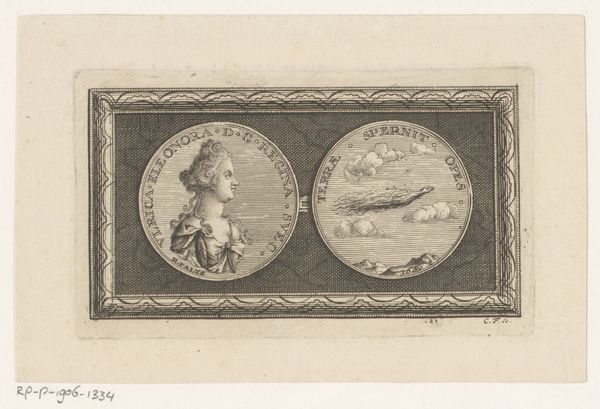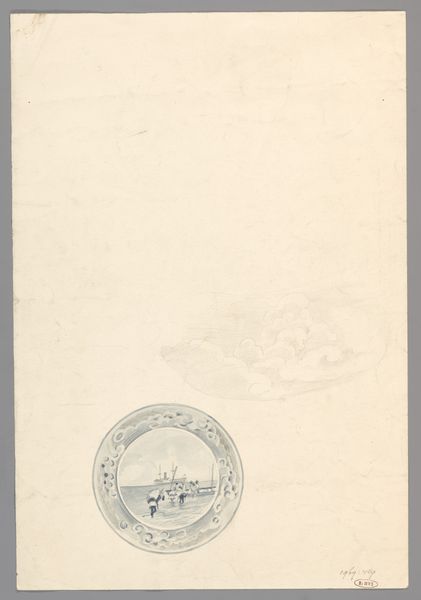
Medaille voor het jubileum van de Franse kerk in Berlijn 1772
0:00
0:00
danielnikolauschodowiecki
Rijksmuseum
print, engraving
#
portrait
#
neoclacissism
# print
#
history-painting
#
engraving
Dimensions: height 54 mm, width 93 mm
Copyright: Rijks Museum: Open Domain
Curator: Welcome. Today, we’re looking at a piece by Daniel Nikolaus Chodowiecki, "Medaille voor het jubileum van de Franse kerk in Berlijn," created in 1772. It's held here at the Rijksmuseum. Editor: My immediate thought? Quiet dignity. There's a formality here, something carefully, deliberately composed, like a memory being carefully burnished. The figures, though small, possess a certain monumental quality, a silent testament to faith and resilience. Curator: I find it interesting how the print embodies Neoclassical ideals, mirroring the historical context—a longing for stability amidst the social shifts of the time. What's particularly engaging to me is how Chodowiecki used the engraving to create a historical document and an idealized representation of faith, asylum, and charity intertwined. Editor: Well, seeing this work from a materialist point of view makes me think about the means of its production, specifically prints. I consider who would have commissioned and then circulated it, what type of labor was involved to make the metal cut to print these—all of that plays into understanding it not as only high art, but a functional craft object. Who bought them, what sort of politics did they imply by hanging them? That's interesting to me. Curator: Indeed, it does bring another layer to the work, as an artifact itself. I keep returning to that central figure, "Charity", which reminds me of ancient Roman depictions of matronly virtue. Editor: See, when I focus on that figure, what comes to mind are the French Huguenots. To me, this medaille is a physical trace of a complex network of displaced populations and the patronage required for a religious organization to have survived its forced migration from France and integrated into the political framework of Prussia. I keep asking myself: what’s at stake in celebrating this anniversary? Curator: Thinking about those intersecting points of art, belief, and refuge, what's beautiful is seeing those threads woven so elegantly, however invisibly, within the seemingly simple lines of this print. Editor: Right, from a materialist viewpoint, these types of prints often reveal that complex set of arrangements needed to bring what some consider high art into being, but that, on their own terms, carry enormous material and political stakes.
Comments
No comments
Be the first to comment and join the conversation on the ultimate creative platform.

